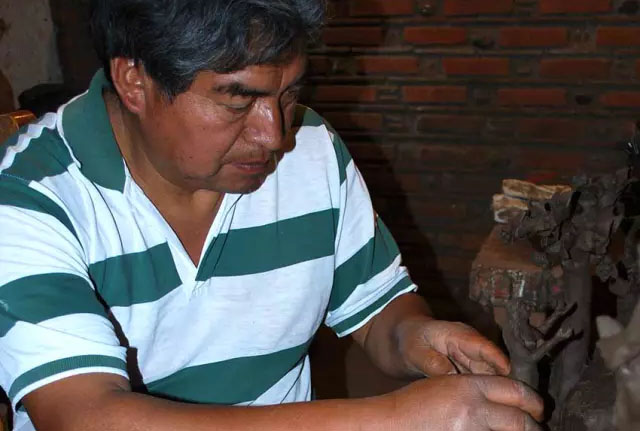The noted ceramicist, recognized for his technique, creativity and innovation, died March 20
Shared/by Leigh Thelmadatter
Mexico Desconocido
On March 20, 2022, Mexico’s world of folk art lost one of its masters.
Tiburcio Soteno was not just a fine ceramicist, he was a central figure in a community’s struggle to maintain its identity in the face of sprawling urbanization.
For almost all of its history, Metepec, México state, was a rural farming community with an important pottery industry dating back to the pre-Hispanic period. Today, if you go into the town’s historic center, you can see that rural heritage in the church and the masonry houses, whose mortar joints are decorated with small pebbles to create a unique look.
However, that ancient charm stops abruptly a couple of blocks from the church as you enter an unending sea of often unpainted cinder block construction. Land prices driven up by local growth and the rise of bedroom communities catering to those working in the western part of Mexico City means that farming is all but extinguished here.
But pottery manages to hang on.
The oldest forms are utilitarian, especially the making of pots called cazuelas, which are often used for cooking mole sauce and rice. But in the last century, in response to changes in the market, many of the town’s artisans began shifting to decorative items, such as sun-and-moon wall decorations and mermaid figures.
But perhaps Metepec’s most important contribution to Mexican folk art is its “trees of life” sculptures.
Originally decorated candle holders, these winding, ornate tree sculptures have since taken on a life of their own, even losing spaces to put any candles. The most traditional of these is a tree with leaves and animals representing the Garden of Eden and figures of Adam and Eve. However, they have since evolved to include other themes; even the tree part itself can be stylized to the point that it becomes an abstract geometric support structure.



